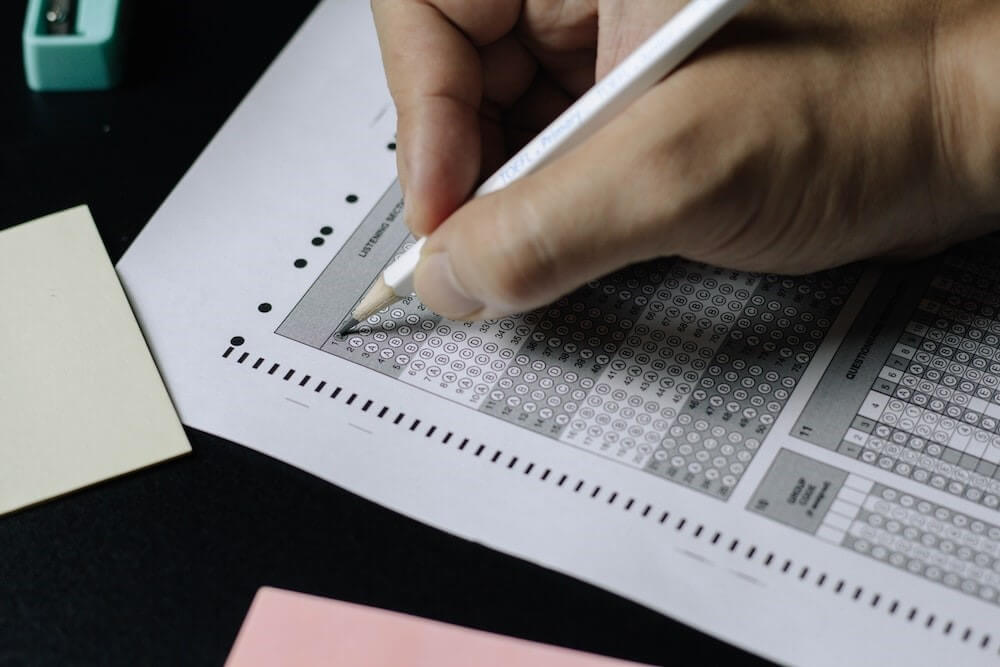Complete Guide to Writing an MBA Dissertation
MBA dissertation writing or MBA thesis writing is a combination of art and craft. On the one hand, university committees usually base their appraisals on the novelty of your topic, the interesting choice of study participants, and the practical contribution of your research. These are the things that make or break dissertation projects and should be your key focus with writing your work. On the other hand, the devil is in the detail and we have seen many students lose valuable points or going through multiple re-writes due to missing some important elements related to submission requirements or format requirements. When you have invested months of hard work in a single endeavour, you may feel tired, absent-minded, and willing to get over it as soon as possible. The key to overcoming this ‘last mile’ barrier is to use a clearly structured plan to be 100% sure that no critical elements have been missed.
The following dissertation check-list covers all key aspects you need to inspect to leave no room for failure. It covers all your journey starting from choosing a topic to developing a final presentation for your thesis defence. Feel free to head straight to the section that is of highest relevance to the dissertation writing phase you are presently at.
Starting an MBA Dissertation
The best way to avoid problems is to prevent their emergence right from the start. An MBA dissertation project is usually a large-scale endeavour spanning over many months and requiring a lot of time and other resources to complete. Starting it without a plan is an academic suicide, which is confirmed by relatively high failure rates in this sphere. If we rephrase this idea in a positive light, writing a dissertation should be the pinnacle of your academic journey as an MBA student. Hence, you need to design an optimal plan for maximising your ‘return on investment’ ratio. Anyone can complete an MBA dissertation by disrupting their work/live balance and throwing oneself at this challenge. The trick is to achieve similar results without burning out and wasting a lot of unnecessary resources on the things that do not contribute to the end result.
In this section, we will analyse several aspects of such planning that can literally save you from weeks of frustrating rewrites and sub-optimal academic outcomes. Some of these recommendations may be related to your personal skills and competencies while others may be associated with your external activities and university arrangements. While you may choose to skip some of them due to your personal preferences, their simultaneous use creates a synergistic effect ensuring your future success as a dissertation writer. There are few things more frustrating than having to alter some of your main structural elements in the middle of your project while missing some intermediary deadlines as a result. A good beginning is half the battle, which is why you may opt for investing several weeks into the elements in this section to have a seamless academic journey afterwards.
MBA Dissertation Topics Selection
Choosing a research topic is, perhaps, the most important decision that can be made by any student starting their dissertation journey. An MBA project may involve a wide range of possible spheres to explore, which frequently creates a false sense of confidence. However, amateur dissertation writers easily overlook a number of crucial elements such as:
- Supervisor’s knowledge of a particular sphere.
- Supervisor’s willingness to explore certain topics.
- Your capability to reach specific audiences and collect primary data.
- The amount of resources you can spend on this project.
- The presence of competing projects in the same field.
Selecting a suitable MBA dissertation topic is a challenging task even for experienced dissertation writers since there are multiple concepts and spheres that are worth exploring. The best tactic is to look for multiple ideas in order to have several alternative options by the moment you choose to confirm one of them with your supervisor. Research available academic journals, course materials, newspapers and other media to prepare a short list of what topics you find meaningful and engaging.
Next, take your time deciding whether it is important enough to tackle and what will be the focus of your research. Although it may seem irrelevant at this stage, you should also think of appropriate methods. This practice can save you from a world of trouble down the road as many students identify that their topic is not manageable from a methodological standpoint in the middle of their dissertation-writing project.
As soon as you have a list of 3-5 topics, you may choose to discuss them with:
- Potential supervisors.
- Dissertation writing experts.
- Academic practitioners.
- Fellow students.
These extra opinions can really help you narrow down your topic focus or prioritise some of the options on your list. The presence of multiple opportunities also allows you to negotiate with your prospective supervisors and ensure that you both find a certain ideas interesting for research.
Check the Requirements of your MBA Dissertation
While this recommendation may seem obvious, we have seen many students losing their hard-earned marks due to some silly mistakes related to formatting and referencing rules or incorrect word count distribution between the sections. These issues usually do not lead to a complete fail but may be highly detrimental if you want to write a first-class MBA dissertation. Here is how you can prevent such problems right from the start:
- Make sure to study all module handbooks and ethics protocols provided by your university.
- Take a look at format requirements such as font types and sizes, page margins and referencing style.
- Make a list of key recommendations and insert the section word count in the headings of all MBA dissertation
- Mark all potentially ambiguous requirements and clarify them with your supervisor before starting your writing process.
If you choose to follow a single rule from this section, this is the one to prioritise. Remember that the devil is in the detail and what may seem trivial at first sight can have a strong impact on the overall quality of your dissertation in the end. There is nothing worse than losing some points due to formatting mistakes or other minor errors that could have been omitted with 5 minutes spent on compiling the aforementioned lists of requirements.
Select Your Research Methods
Your MBA dissertation can proceed via multiple routes depending on a number of factors:
- Your preference for secondary (desk research) or primary (interviews/surveys/observations) research strategies.
- The selected problems and the data necessary for answering your dissertation questions.
- Your focus on unique industry experts or large samples of non-unique population members.
- The resources available to you/
- Respondent availability and accessibility.
As soon as you have a realistic MBA dissertation topic, you need to also develop your research aim, objectives, and questions and think about the ways to address them. This understanding is crucial for further discussions with your supervisor and the development of your proposal.
Finalise Your MBA Dissertation Structure
Most MBA projects have common structures, which allows you to plan their completion in advance. Here is a list of common elements you should include in most dissertation scenarios.
- Executive Summary
- Introduction
- Literature Review
- Dissertation Hypotheses
- Methodology
- Results
- Discussion
- Conclusions
- Recommendations
- Reference List
- Appendices
Make sure that your structure is in line with your university requirements and write down specific word count distribution per section. As discussed below, you do not need to complete all sections while creating your first draft. Specifically, your Executive Summary, Introduction, and Conclusion may be delayed until the revision phase to make them more specific in relation to the results you obtain.
Develop a Plan
Any previously submitted dissertation proposal usually involves a Gantt chart outlining how you are going to spend the following weeks and months working on your MBA dissertation project. While many students tend to write some approximate dates in this document in a random manner, we would advise you to treat it seriously. Actually, we would suggest that you should take it one step further:
- Write a list of dissertation sections you have to create.
- Make a list of smaller objectives you have to complete to finish each one.
- Write down approximate duration of specific activities and the resources you need.
- Discuss the final plan with your supervisor or a professional dissertation writing service.
A good plan is your safety belt. You may not need it at all times but it can save your life in a critical situation by keeping you on track. Developing such document also ensures that you are fully aware of all aspects of dissertation-writing before you even start. Down the road, this allows you to focus on the most crucial parts and not waste your time on refining the elements that do not contribute much to the final result.
Find the Right Supervisor
Having the right supervisor can give you a great advantage in writing your dissertation. If there is a choice, consider someone who has a reputation for getting students through. You should select the most academically and socially engaged supervisor who really pays attention to the requirements for the degree, clearly understands the process, and can provide you with the right advice. If you struggle to understand your tutor and still have questions about the dissertation writing process, don’t be shy to apply for our tutoring service. Some supervisors simply don’t have enough time to give a quality consultation to each student.
Have a Plan B
The best way to avoid contingencies is to accept the possibility of their emergence. Here is a list of risk management strategies that will protect you from harm even in the worst-case scenario:
- Investigate how your university handles extensions in the case of submission delays or personal barriers to a timely completion of MBA dissertations.
- Explore whether you can change your supervisor in the middle of your research project.
- Find a reliable custom dissertation writing service that can give you a second opinion in a complex situation.
If we could provide a single recommendation on how to write your dissertation, we would suggest that you should thoroughly plan it from the onset. A well-designed research project is a self-fulfilling prophecy that virtually writes itself into existence. You start with a well-designed and unique topic that is supported by realistic and measurable objectives that can be addressed with convenient and reliable methodological instruments. It still takes time and effort but the amount of back-and-forth is rather small and you can easily plan your dissertation work and seamlessly integrate it into your personal life without major conflicts. Many students reverse this order and start with writing some sections of their projects while revising their research objectives or adjusting their topic along the way. This strategy is clearly sub-optimal and will never result in a coherent study with a clearly outlined main argument. Hence, your primary goal is to seek professional guidance and lay this foundation right. 15 Writers team are happy to offer help with dissertation writing and share our know-how in achieving top marks. Don’t hesitate to check our dissertation writing samples to make sure we provide the best academic service. You can start with a dissertation proposal to avoid the risk of ordering a full project at once. If you need help with your proposal, check out our dissertation proposal writing services.
Rolling Up Your Sleeves: Writing the First Draft
The next checklist allows you to create a ‘rough draft’ of your MBA dissertation. Aim for 80% of the word count per section and address all key requirements found earlier. The goal of this phase is to get you ‘almost there’ in terms of your readiness but leave some space for further revisions and additions. There are multiple reasons for pursuing this strategy, namely:
- You simply cannot get everything right at the first attempt. Most likely, further revisions will add new insights, links, and ideas.
- Writing an effective Introduction or Conclusion section usually requires a finished work to integrate signposting elements and directly refer to your findings.
- An almost completed draft leaves enough space to embed an overarching line of argument, which is why we reserve some space for such additions.
- You may choose to move some parts of your text to the Appendices during further revisions or otherwise adjust your initial work.
The following points should help you create an ‘80% draft’ that should get you a ‘pass’ mark with minimal revisions even in the worst-case scenario. As noted earlier, we will improve it during the following phase of your MBA dissertation writing process.
- Make sure that all essential sections of the work are included. These are Abstract, Acknowledgements, Table of Contents, Lists of Tables and Figures, Introduction, Literature Review, Methodology, Analysis and Findings, Conclusion, List of References, and Appendix.
- Your Literature Review must clearly outline the key theories you rely on and present the conceptual framework of your study. You may want to revise its contents to better align them with the overall course of your dissertation.
- Including a table of key theories and authors at the end of your Literature Review may be a good idea for improving readability. It also makes referring to them easier when you are writing your Discussion chapter. If you are struggling with your literature review, our literature review services can guide you.
- The Methodology section must have a table of variables for a quantitative study and a clear description of all utilised methods and instruments.
- Make sure that you have discussed all threats to validity and reliability.
- Your analysis process must be clearly defined. Ideally, any other researcher in your field must be able to follow it and obtain similar results.
- The Analysis chapter must include all key figures and tables presenting your results.
- The Discussion should refer to all critical sources and theories from your Literature Review.
- The Conclusion and Recommendations section must revise your objectives and clearly demonstrate how you addressed them.
- All tables and figures should have headings and be referred to in the main text. Also, if they were taken from other sources, these sources should be mentioned below the tables and figures, as well as in the reference list.
Moving On: Revising Your Draft
As soon as you have finished writing your first draft, you need to complete two separate tasks. On the one hand, you have to thoroughly proof-read and edit it in order to identify some missing elements and improve its overall quality. This part primarily refers to the revision of your main sections and may involve ‘going back to the drawing board’ if some crucial sections must be improved or replaced. Usually, such problems are associated with the coherence of your main argument across all chapters and the quality of your Analysis chapter.
On the other hand, your final dissertation draft must include a number of auxiliary sections such as the Abstract, the Acknowledgements, Appendices, informed consent forms, ethics forms, and other obligatory parts. During this phase, we need to add them to your document and appraise what additional elements can be added to improve the readability of your work.
- The Abstract is usually the first part of the dissertation which is placed before the table of contents but is written last. The abstract is a short overview of the whole dissertation which provides the very gist of the research and its main outcomes.
- The Acknowledgements are also written after finishing the main text of the thesis so that you could have a chance to acknowledge those who helped you in your research or supervision.
- When writing Acknowledgements, common courtesy is to express gratitude to your tutor, the members of the committee, your faculty, and any other people who helped you with writing your work.
- If necessary, provide a list of Acronyms and/or Definitions before your main body to facilitate readability.
- The Introduction chapter shows the relevance of the topic, the background, formulates the aim and objectives and shows your MBA dissertation structure. You may want to revise it after completing the dissertation to make it more specific and enticing to the readers.
- The Conclusion summarises the work by showing whether the aim and objectives were attained in the study. Make sure that all of them are discussed with reference to your results and prior studies.
- Add signposting wherever possible to make your dissertation more articulate even for non-specialists.
- To write a 1st standard dissertation, you should outline the key contributions to academics and practitioners.
- Discuss all key limitations of your project in detail.
- Make sure that you have all signed informed consent forms necessary to confirm your compliance with the ethical standards of your institution.
Finishing Your MBA Dissertation
The final inspection should explore all aspects that need to be considered prior to submitting your dissertation. It will be most valuable when you have already completed your document draft and are preparing it for final submission. The recommendations in the check-list address all key parts of dissertation projects. However, you should also revise your dissertation requirements since some universities have custom requirements in terms of submission procedures, referencing styles, document formatting, and the use of visual materials and appendices. Overall, this process can be subdivided into two parts.
Content Revision
This part needs to ensure that your draft meets all applicable requirements in terms of its grammar, style, section contents, and other constituent elements.
- The main chapters of the thesis expose in detail what is done in the study and how it is done. The narrative should be logical and consistent, critical and without mistakes.
- The text of the thesis should be formatted according to the requirements of the university; make sure that each page, as well as each table and figure, is numbered.
- Check if the Reference list includes all sources mentioned in the text and is consistent in style through the work.
- Make sure that all of your figures and tables are properly referenced.
- Make sure that your Appendices contain all relevant elements such as questionnaire forms, informed consent forms, additional figures, and interview transcirpts.
- Read your dissertation from the beginning to the end in one sitting. Your text should lay out a clear line of argument following a consistent flow at the level of sentences, paragraphs, and sections.
- Check the word count for all sections if it is specified by your university requirements.
- Proofread all text and format spacing and font consistently. Use both electronic and printed copies to avoid the ‘bleary eyes’ effect.
- Check your title page and its formatting.
- Analyse your implications for practice and make sure that you have suggested sufficient examples of how your dissertation findings may be valuable to industry practitioners.
- Suggest future research directions and clearly outline how your fellow researchers can expand your analysis and address its limitations and knowledge gaps.
Technical Aspects
This final part of the checklist ensures that your dissertation is fine from a technical standpoint. While problems of this kind are relatively rare, having a backup plan for such circumstances may not be a bad thing.
- Try to open your dissertation file on several computers before submission. This will allow you to identify any bugs or compatibility problems.
- If possible, submit the document in PDF. This will ensure its integrity and compatibility with most computer systems. Traditional file formats such as .doc or .docx in Microsoft Office may introduce formatting problems if the software version of the reviewers is different from the one used by you.
- Check if all figures in your document are embedded JPG or PNG files. Avoid using cross-referenced elements in submitted work.
- Write the necessary declarations such as the statement confirming that you are submitting this dissertation paper for the first time and other applicable documents required by your university.
- Leave at least three days for binding your dissertation to reserve the time for any page replacements or similar changes.
- Make sure that the document was uploaded successfully and received by your university.
- Use the spare time to prepare for your future defence.
If you struggle with any of the aforementioned elements of MBA dissertation writing, you can use our website to get MBA dissertation help online, browse through some MBA dissertation examples or explore our sample MBA dissertation topics. Our academic writers are a team of industry professionals that have supervised hundreds of projects in this sphere in the past. We offer 100% satisfaction guarantees for all of our services including dissertation writing, essay writing, and assignment help. You can also order individual elements such as MBA project topics or individual chapters. We may assist you with any part of your dissertation you presently struggle with or offer a second opinion to appraise whether your current choices are suitable for writing a 1st standard dissertation.









